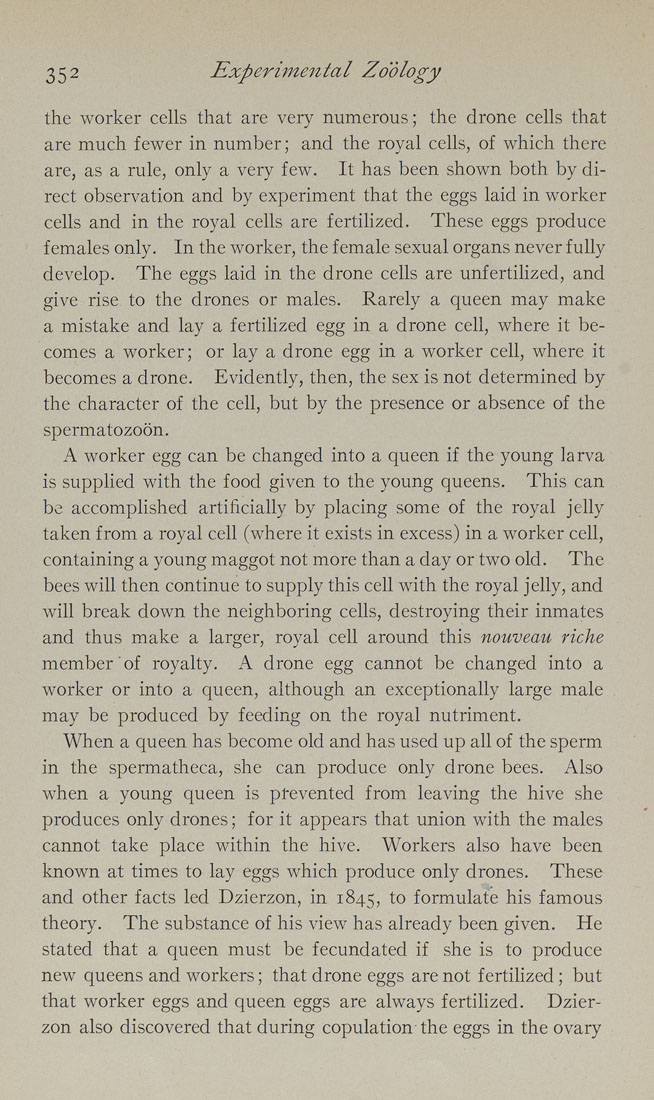352 Experim-ental Zo'dlogy
the worker cells that are very numerous; the drone cells that
are much fewer in number; and the royal cells, of which there
are, as a rule, only a very few. It has been shown both by di¬
rect observation and by experiment that the eggs laid in worker
cells and in the royal cells are fertilized. These eggs produce
females only. In the worker, the female sexual organs never fully
develop. The eggs laid in the drone cells are unfertilized, and
give rise to the drones or males. Rarely a queen may make
a mistake and lay a fertilized egg in a drone cell, where it be¬
comes a worker; or lay a drone egg in a worker cell, where it
becomes a drone. Evidently, then, the sex is not determined by
the character of the cell, but by the presence or absence of the
spermatozoon.
A worker egg can be changed into a queen if the young larva
is supplied with the food given to the young queens. This can
be accomplished artificially by placing some of the royal jelly
taken from a royal cell (where it exists in excess) in a worker cell,
containing a young maggot not more than a day or two old. The
bees will then continue to supply this cell with the royal jelly, and
will break down the neighboring cells, destroying their inmates
and thus make a larger, royal cell around this nouveau riche
member of royalty. A drone egg cannot be changed into a
worker or into a queen, although an exceptionally large male
may be produced by feeding on the royal nutriment.
When a queen has become old and has used up all of the sperm
in the spermatheca, she can produce only drone bees. Also
when a young queen is prevented from leaving the hive she
produces only drones; for it appears that union with the males
cannot take place within the hive. Workers also have been
known at times to lay eggs which produce only drones. These
and other facts led Dzierzon, in 1845, to formulate his famous
theory. The substance of his view has already been given. He
stated that a queen must be fecundated if she is to produce
new queens and workers; that drone eggs are not fertilized; but
that worker eggs and queen eggs are always fertihzed. Dzier¬
zon also discovered that during copulation-the eggs in the ovary
|








